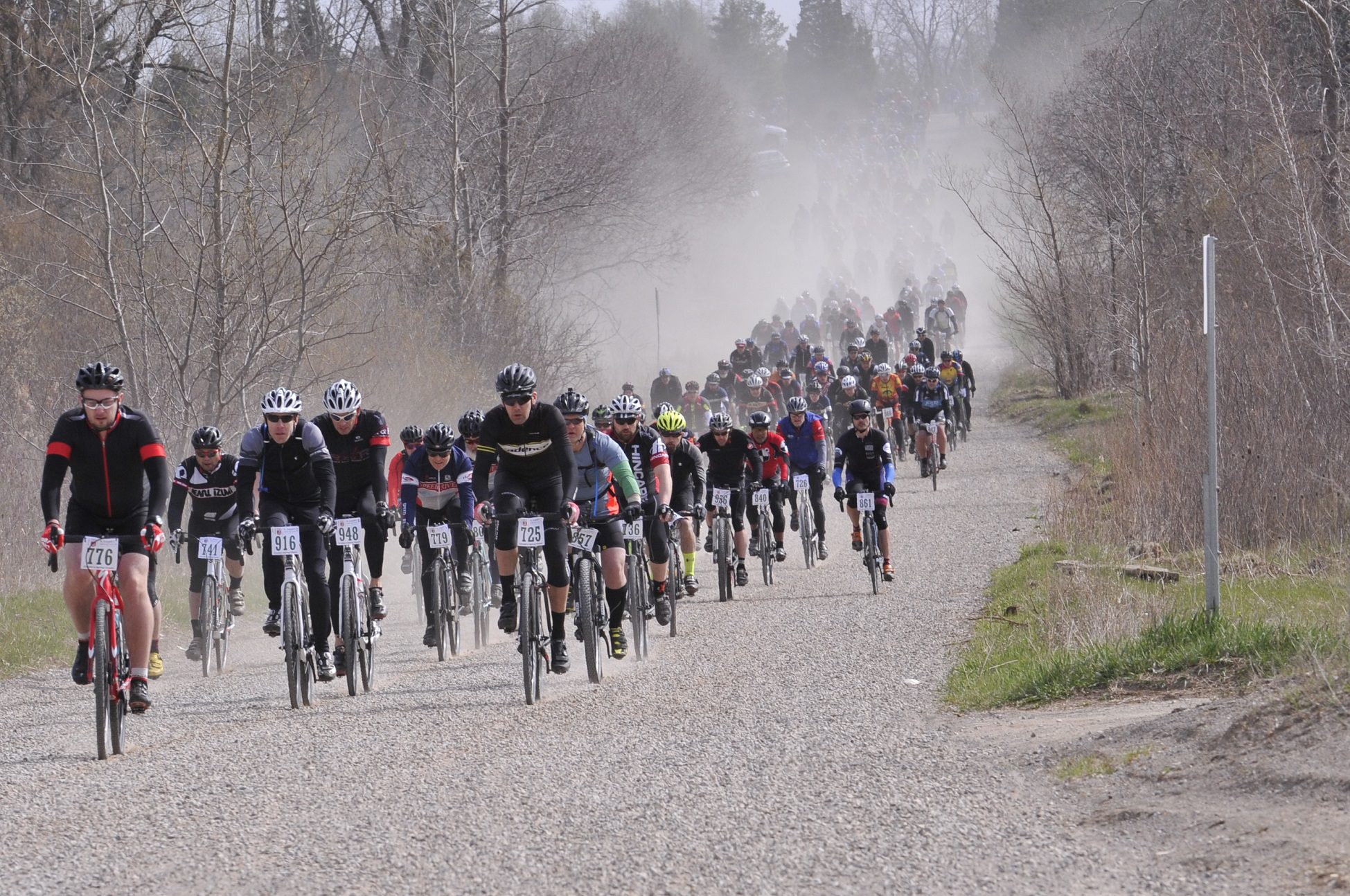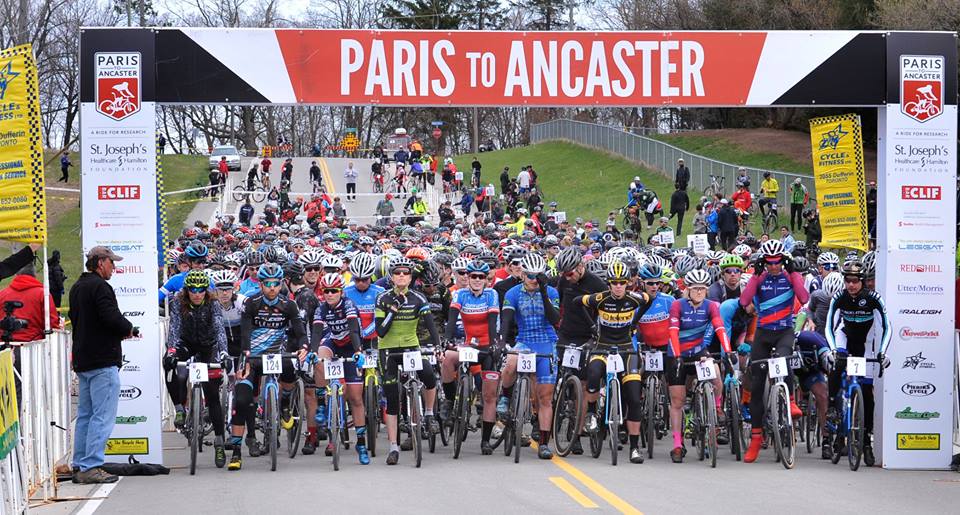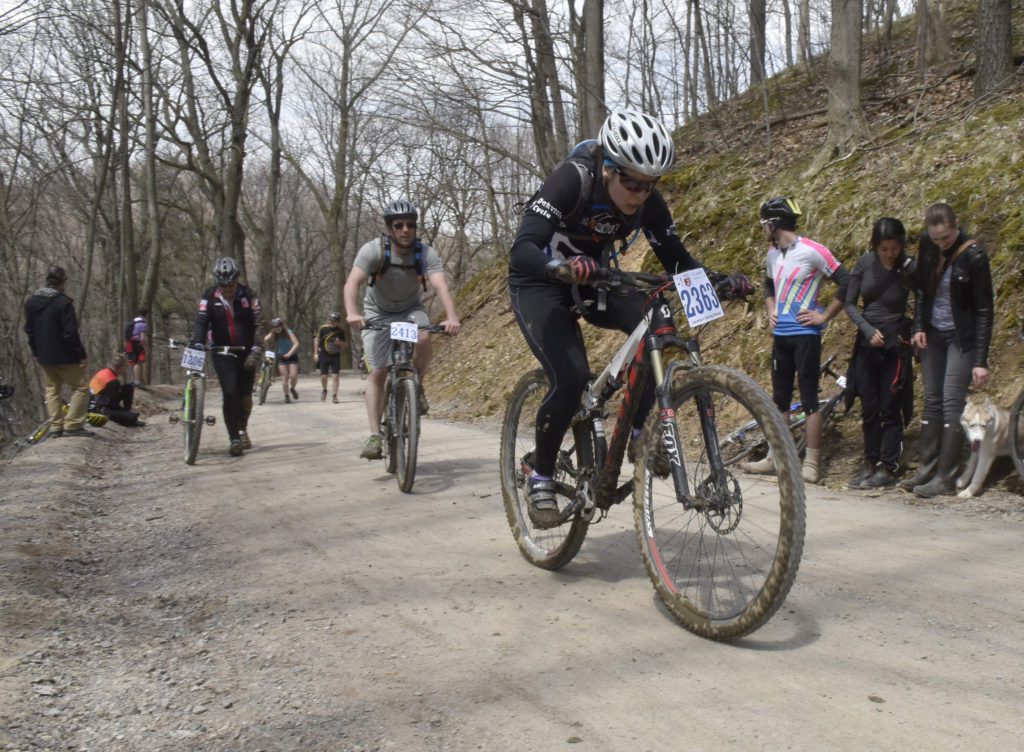10 things you need to know about the Paris to Ancaster bike race
Get ready for the Canadian Spring Classic

Paris to Ancaster co-director Tim Farrar admits that the starting town of Paris, Ont., was chosen because it shares a name with the French capital. “Paris-Roubaix tribute races are all over North America, all over the world. Everyone seems to have a race that is an answer to Paris-Roubaix. Our only gimmick is that we actually start in Paris,” he says. To ring in spring this year, do as many riders have done for more than 20 years and get muddy. Here are 10 things you need to know about the Paris to Ancaster bike race so you’ll be prepared on April 30.
RELATED This is your Paris to Ancaster race 2017
1. Run what you’ve brung

Whether you’re on a cyclocross, mountain or even tandem bike, you can do P2A on whatever you can get your hands on. If doing well in the race is important to you, a cyclocross bike is your best ride. But, even an old road bike will get you to the tough climb up Martin’s Road just before the finish.
2. There will be mud
It doesn’t matter if it’s been raining or not in the leadup to the event, there is guaranteed to be many muddy sections, especially the Powerline Road Mudslide. Make sure you have a few dollars in cash to pay for the power wash at the end of the race. Funds always go to a local youth development team.
3. Line up with the pros

P2A always brings a pretty good pro field. Past stars have include former American cyclocross champion Jeremy Powers, former Canadian ‘cross champion Mike Garrigan, current national CX champ Jeremy Martin, perennial CX contender Aaron Schooler, Paris-Roubaix podium finishers Steve Bauer and Roger Hammond, multiple mountain bike world champion and Olympic medallist Alison Sydor and current under-23 World Cup cyclocross leader Ellen Noble.
4. Ride on private trails

Some of the course goes through private land, so race day is the only time you’ll be able to ride those sections. Often, the landowners are out to cheer you on.
5. Be prepared for any weather
Early spring weather is unpredictable. We’ve raced in everything from summer kit and arm warmers in balmy spring weather to full winter gear. One year we faced snow, rain, wind and sun.
6. P2A was a groad race before ‘groad’ was a thing

The race has been a spring classic for more than 20 years and regularly attracts a field of more than 2,000 riders
7. It’s not just for the hard-cores

The full course is 70 km. But you can sign up for the 40-km or 20-km route if you’re not ready for the full monty. There’s even a kids’ course called “Let’s Ride!” for riders age 8 to 12.
8. Cramping is practically guaranteed

It doesn’t seem to matter whether we held back something in reserve or went hard from the gun, we’ve always seem to cramp on the final climb. We know we aren’t the only ones.
9. Be self-sufficient
Because of the rural nature of the course, dirt roads and trails, don’t count on tech support to save you if you have a mechanical. It could be a long walk. Be prepared with at least a spare tube—two is better—and more than just CO2. The same goes for food and water: there are aid stations, but they might not be where you want them.
10. Stash at least a couple of towels along with your warm change of clothes at the finish

It sucks to be munching a well-earned post-race meal in a cold and wet chamois. It’s even worse to drive home in soggy kit. Pack a couple of towels (or three or four) with your warm change of clothes.
For more on Paris to Ancaster, including how to register for this year’s event, visit parisancaster.com
